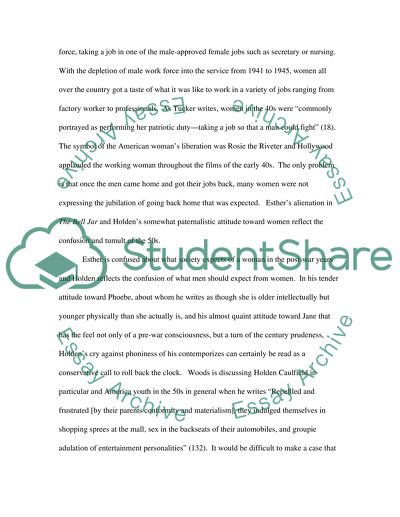Cite this document
(Conformity and Rebellion in the 1950s America Essay Example | Topics and Well Written Essays - 1750 words, n.d.)
Conformity and Rebellion in the 1950s America Essay Example | Topics and Well Written Essays - 1750 words. https://studentshare.org/social-science/1535540-what-do-the-bell-jar-and-catcher-in-the-rye-identify-as-the-main-concerns-of-the-1950s-for-young-people
Conformity and Rebellion in the 1950s America Essay Example | Topics and Well Written Essays - 1750 words. https://studentshare.org/social-science/1535540-what-do-the-bell-jar-and-catcher-in-the-rye-identify-as-the-main-concerns-of-the-1950s-for-young-people
(Conformity and Rebellion in the 1950s America Essay Example | Topics and Well Written Essays - 1750 Words)
Conformity and Rebellion in the 1950s America Essay Example | Topics and Well Written Essays - 1750 Words. https://studentshare.org/social-science/1535540-what-do-the-bell-jar-and-catcher-in-the-rye-identify-as-the-main-concerns-of-the-1950s-for-young-people.
Conformity and Rebellion in the 1950s America Essay Example | Topics and Well Written Essays - 1750 Words. https://studentshare.org/social-science/1535540-what-do-the-bell-jar-and-catcher-in-the-rye-identify-as-the-main-concerns-of-the-1950s-for-young-people.
“Conformity and Rebellion in the 1950s America Essay Example | Topics and Well Written Essays - 1750 Words”. https://studentshare.org/social-science/1535540-what-do-the-bell-jar-and-catcher-in-the-rye-identify-as-the-main-concerns-of-the-1950s-for-young-people.


